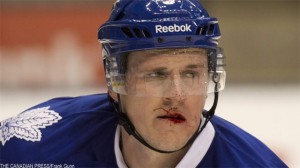
The roles and responsibilities associated with captaincy in sports are often difficult to identify. Mired in the vague ambit of “leadership” and often prone to media sensationalism, fans commonly have their own personal definition of what they want in a captain. Yet there is the concrete realization that at the very least, a captain must be recognized as such by those he leads. That is why this TSN article is as good an indicator as any that Dion Phaneuf is on the right track with this young Toronto squad.
Hockey fans’ thoughts on ideal captains tend to vary between a multitude of popular schemas. For instance, there is the tough-as-nails, gritty warrior captain. These captains can contribute significantly in the offensive end, but best lead through the relentless, fearless use of their bodies as battering rams. This brand of leader is currently epitomized by the likes of Ryan Callahan, David Backes and Dustin Brown.
Alternatively, there is the captain that, night in and night out, is a two way force for his club. The tireless hard work of these leaders at both ends of the rink gives their teammates inspiration and an example to follow. Zach Parise, Mikko Koivu, and Jonathan Toews lead their franchises in this manner and are respected league-wide for their consistent effort.
There are also the ever-present veteran captains. These long serving players command respect not only because of their play, but also on account of their experience, savvy, and status in the hockey community at large. Present iterations of this schema include Nicklas Lidstrom, Daniel Alfredsson, and Shane Doan.
Additionally, there are a few, less well-defined schemas. For one, I would be remiss not to mention the “intimidating blueline presence” captain, a category many would throw Toronto’s Phaneuf into (along with Shea Weber, Chris Pronger, and Zdeno Chara). Moreover, many of us are probably familiar with the “best player on the team” captain, popular on the hockey teams you played on growing up (see: Joe Thornton, Vincent Lecavalier, Alexander Ovechkin).
Thus, with such a variety in types of leaders, one inevitably wonders, “what type of captain is the best?” There’s no simple answer, but the best I have ever heard is “the type of captain that your team needs”. And really, the evidence supporting this response is on hand with many of the better captains in today’s game, as their respective schemas often define the identity of their teams. This is on display with gritty, bruising clubs such as the New York Rangers (Callahan) and the Los Angeles Kings (Brown). It is furthered by defensively aware, hard working teams like the Minnesota Wild (Koivu) or veteran-rich, experienced squads like the Detroit Red Wings (Lidstrom) and the Phoenix Coyotes (Doan).
In many of the sad years for this Toronto franchise since the lockout, there has been an obvious struggle for identity. I am a Mats Sundin fan (yes, still) and believe he fell within a combination of the “veteran” and “best player on the team” captaincy schemas. Yet, with the loss of high-quality veteran support post-lockout (and high-quality players in general), this team has floundered without an identity for years. Clearly, this is beginning to change. While our developing identity is partially due to an influx of talent and improving player development, articles such as the one linked above make it clear that a change in leadership in the locker room has had a distinct effect. With a fiery personality and no-nonsense attitude, Dion Phaneuf may be defining a unique schema of his own. It may also be one that is perfect for an incredibly young, but increasingly dedicated group of Toronto Maple Leafs.
***
LEAFS LINKS:
Gustavsson looking more like a monster
Upcoming games important for the playoff race
In Buffalo, they’re hoping that playing the Leafs will spark their club


![Craig Berube Post Game, Blues 5 vs. Leafs 1: “We gave them three goals… The [3-1] goal was lazy hockey” Craig Berube, Toronto Maple Leafs head coach](https://mapleleafshotstove.com/wp-content/uploads/2024/10/berube-craig-lak-pg-218x150.jpg)

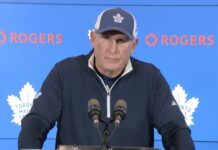


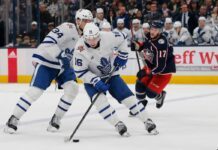

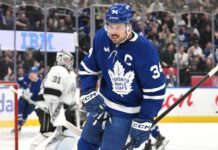


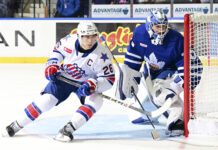











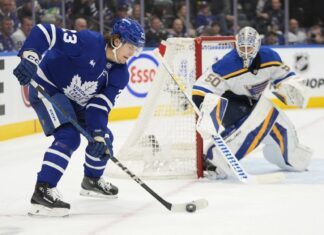
![Craig Berube Post Game, Blues 5 vs. Leafs 1: “We gave them three goals… The [3-1] goal was lazy hockey” Craig Berube, Toronto Maple Leafs head coach](https://mapleleafshotstove.com/wp-content/uploads/2024/10/berube-craig-lak-pg-100x70.jpg)






![Craig Berube Post Game, Leafs 5 vs. Lightning 2: “[Stolarz] is a quality, quality goalie… He’s been excellent for us” Craig Berube, Toronto Maple Leafs head coach](https://mapleleafshotstove.com/wp-content/uploads/2024/09/berube-pg-tor-100x70.jpg)
